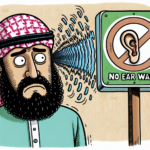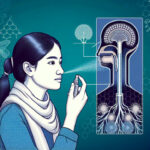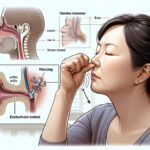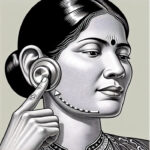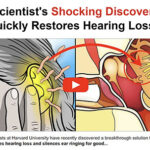This 30 Second Technique is Shockingly Effective
Harmony Restored: Solutions for Eustachian Tube Dysfunction Pulsatile Tinnitus

Understanding Pulsatile Tinnitus and Eustachian Tube Dysfunction
Imagine a rhythmic beating or whooshing sound that seems to pulse in sync with your heartbeat, often causing significant distress. This is the reality for individuals suffering from pulsatile tinnitus, a form of tinnitus where the noise is related to blood flow changes in the vessels near the ear or an increase in blood flow. Often, this condition is linked to eustachian tube dysfunction (ETD), a common ear disorder where the eustachian tube, which connects the middle ear to the back of the throat, fails to open and close properly. Understanding the relationship between these two conditions is the first step towards finding relief.
Defining Pulsatile Tinnitus: The Rhythmic Ringing
Pulsatile tinnitus is distinct from the more common non-pulsatile tinnitus, where the sound is continuous and not associated with the heartbeat. Those experiencing pulsatile tinnitus often describe it as hearing their own pulse or a whooshing sound that comes and goes, typically in time with their heartbeat. This type of tinnitus can be objective, meaning a clinician can detect it during an examination, or subjective, where only the patient is aware of the noise. It can be a symptom of underlying issues, including ETD, requiring a thorough evaluation.
Eustachian Tube Dysfunction: The Basics
The eustachian tube is a small passageway that connects the middle ear to the upper throat and back of the nasal cavity. Its primary role is to equalize air pressure on both sides of the eardrum and to drain any fluid that accumulates in the middle ear. When the eustachian tube doesn't function properly, it can lead to a feeling of fullness or pressure in the ear, hearing difficulties, and sometimes, pulsatile tinnitus. ETD can be temporary, often caused by a common cold or allergies, or chronic, resulting from ongoing conditions or anatomical issues.
How Eustachian Tube Dysfunction Causes Pulsatile Tinnitus
When the eustachian tube is blocked or malfunctioning, it can lead to abnormal pressure changes in the middle ear. This pressure can cause the ear drum to tense, which may alter the way sounds are transmitted and perceived. Additionally, if the dysfunction restricts normal blood flow or induces fluid build-up, it can amplify the sound of the blood circulating through nearby vessels, leading to pulsatile tinnitus. Understanding the precise cause of ETD is crucial, as it informs the treatment approach to alleviate both the dysfunction and the resulting tinnitus.
The Anatomy of the Ear and Eustachian Tube
The eustachian tube's role in maintaining ear health is both fascinating and complex. Normally, the tube remains closed and only opens during swallowing or yawning to equalize air pressure and drain secretions. The anatomy of the eustachian tube includes a bony and cartilaginous section, lined with mucous membrane, and is approximately 35mm in length in adults. It's angled in such a way that aids drainage and pressure regulation, but this also makes it susceptible to blockages and dysfunction, which can impact overall ear health and contribute to conditions like pulsatile tinnitus.
The Eustachian Tube's Role in Ear Health
Good eustachian tube function is essential for hearing and ear health. It regulates air pressure in the middle ear, ensuring it is equal to the pressure outside the ear. This balance is necessary for the proper vibration of the eardrum and the conduction of sound. The tube also serves as a conduit to drain mucus from the middle ear to the throat, protecting against infections and other complications. When the eustachian tube's functions are compromised, symptoms like muffled hearing, discomfort, and pulsatile tinnitus can arise.
The Structure of the Eustachian Tube and Its Functions
The eustachian tube is anatomically designed to perform its critical functions efficiently. The cartilaginous part, which makes up the majority of the tube's length, is flexible and helps with opening and closing. The bony part is more rigid, providing structure. Inside, a lining of mucous membrane protects against infection and assists in the clearing of secretions. Muscles surrounding the tube aid in its function, particularly the tensor veli palatini muscle, which activates the tube's opening during swallowing or yawning. This intricate design is crucial to its role in ear health.
How Ear Anatomy Can Affect Tinnitus Symptoms
The unique structure of the ear and eustachian tube can influence the manifestation and severity of tinnitus symptoms. For example, a narrow or dysfunctional eustachian tube may be more prone to blockage and subsequent pressure imbalances, which can exacerbate tinnitus. Additionally, the proximity of blood vessels to the ear means that any change in blood flow or pressure can be more easily heard, potentially leading to pulsatile tinnitus. Variations in individual anatomy also mean that some people may be more susceptible to these issues than others, highlighting the importance of personalized assessments and treatments.
Identifying Symptoms of Eustachian Tube Dysfunction Pulsatile Tinnitus
Recognizing the signs of pulsatile tinnitus is a critical step in seeking appropriate care. It often presents as a thumping or whooshing sound in the ear that is in rhythm with the heartbeat. This sound might be more noticeable at night or after physical activity. On the other hand, eustachian tube dysfunction may cause symptoms such as a feeling of fullness or pressure in the ears, muffled hearing, pain, or discomfort. Some might also experience temporary hearing loss or the sensation of their ears "popping" when swallowing or yawning.
Recognizing the Signs of Pulsatile Tinnitus
Pulsatile tinnitus can often be distinguished from other types of tinnitus by its pulsing nature. It may sound like a heartbeat, whooshing, or rhythmic pulsing in the affected ear. The sound might change in intensity or pitch with changes in body position, heart rate, or blood pressure. It is important to note that while pulsatile tinnitus is often associated with eustachian tube dysfunction, it can also be a sign of other health issues, making it essential to consult with a healthcare provider for accurate diagnosis and treatment.
Common Symptoms Indicating Eustachian Tube Dysfunction
ETD symptoms can vary, but they often include ear pain, a feeling of fullness or congestion in the ear, popping or clicking noises when swallowing, and fluctuating hearing loss. Some may experience dizziness or balance issues due to the pressure imbalance in the middle ear. These symptoms can lead to significant discomfort and can impact daily activities, making it important to address them promptly. If pulsatile tinnitus accompanies these symptoms, it further suggests that the eustachian tube may be involved.
When to Seek Medical Attention for Tinnitus
If you're experiencing pulsatile tinnitus, especially if it's accompanied by other symptoms of eustachian tube dysfunction, it's important to seek medical attention. A healthcare provider can help rule out more serious underlying conditions such as vascular disorders, which can sometimes manifest as pulsatile tinnitus. Early intervention can improve outcomes and may help prevent complications. Any sudden or persistent changes in hearing or tinnitus should be evaluated by a professional to ensure proper treatment and management.
Common Causes and Risk Factors
Several factors can contribute to eustachian tube dysfunction and pulsatile tinnitus. Infections, such as the common cold or flu, can cause inflammation and blockage of the eustachian tube. Allergies can also lead to swelling and dysfunction. Structural abnormalities, such as a deviated septum, can physically obstruct the tube, while conditions like sinusitis can cause blockages due to mucus buildup. Additionally, lifestyle factors such as smoking or exposure to pollutants can irritate the eustachian tube and contribute to dysfunction.
Infections and Allergies as Triggers
Infections like the common cold, flu, or ear infections can cause swelling and blockage of the eustachian tube, leading to dysfunction. Allergies are another common trigger, with reactions causing inflammation that affects the tube's ability to open and close properly. Both conditions can lead to the accumulation of fluids in the middle ear, creating an environment ripe for pulsatile tinnitus to develop. Treating these underlying causes is often key to alleviating the symptoms of ETD and associated tinnitus.
Structural Abnormalities and Their Impact
Structural issues within the nasal passage or ear anatomy can contribute to eustachian tube dysfunction. A deviated septum, large adenoids, or a narrow eustachian tube are examples of anatomical abnormalities that can interfere with normal function. These structural challenges can lead to persistent symptoms and may require more targeted treatments, such as surgery, to provide relief. An accurate diagnosis of these conditions is critical for developing an effective treatment plan.
Lifestyle and Environmental Risks
Lifestyle choices and environmental factors play a significant role in the health of the eustachian tube. Smoking, for instance, can irritate the mucous membranes and exacerbate dysfunction. Exposure to environmental irritants like pollution or chemicals can also lead to inflammation and blockage. In some cases, making changes to reduce exposure to these factors can alleviate symptoms and prevent further issues. It's important to consider these risk factors when assessing and treating ETD and pulsatile tinnitus.
Diagnostic Procedures for Eustachian Tube Dysfunction and Pulsatile Tinnitus
To diagnose ETD and pulsatile tinnitus, healthcare providers typically start with a thorough physical examination and review of the patient's medical history. This can include questions about the nature of the tinnitus, any associated symptoms, and potential risk factors. A physical examination may involve inspecting the ear canal and eardrum and assessing the nasal passages and throat for signs of inflammation, infection, or structural abnormalities.
Physical Examination and Patient History
Detailed patient history and physical examination are vital first steps in diagnosing ETD and pulsatile tinnitus. Healthcare providers will look for signs of infection, inflammation, and other abnormalities in the ear, nasal passages, and throat. They may also perform a Valsalva maneuver, asking the patient to gently blow while pinching the nose closed, to observe the eardrum's movement and gauge eustachian tube function. This initial assessment provides crucial information that guides further diagnostic testing.
Audiological Assessments and Imaging
Further diagnostic tests for ETD and pulsatile tinnitus may include audiological assessments to evaluate hearing and tinnitus characteristics. Audiometry tests can help determine the impact on hearing, while specialized imaging techniques like CT or MRI scans can visualize the ear's anatomy and blood vessels. This can be particularly important for identifying potential causes of pulsatile tinnitus, such as vascular anomalies or tumors that may require more specific treatment approaches.
The Role of Tympanometry and Other Tests
Tympanometry is another diagnostic tool that measures the movement of the eardrum in response to changes in air pressure, providing insight into middle ear function. This test can help identify fluid build-up, eustachian tube blockage, or eardrum perforations. Additional tests, such as blood work, may be ordered to check for infections or other systemic conditions that could be contributing to the symptoms. Together, these diagnostic procedures help pinpoint the underlying causes of ETD and pulsatile tinnitus.
Medical and Surgical Solutions
Once a diagnosis of ETD and pulsatile tinnitus has been established, treatment options can range from medical therapies to surgical interventions. Medications such as nasal steroids, decongestants, or antihistamines can be prescribed to reduce inflammation and fluid accumulation. If infections are present, antibiotics may be necessary. In cases where conservative treatments are ineffective, more invasive procedures or surgeries may be considered to provide long-term relief.
Drug Therapies and Their Effectiveness
Drug therapies for Eustachian tube dysfunction and pulsatile tinnitus aim to address the underlying causes of symptoms. Nasal steroids can help reduce inflammation in the nasal passages and eustachian tube, potentially improving function. Decongestants and antihistamines may be beneficial for those with allergies or colds by reducing mucus and swelling. While these medications can be effective for many, they may not provide relief for all patients, and long-term use can have side effects. It's important to use these treatments under the guidance of a healthcare provider.
Minimally Invasive Procedures to Alleviate Symptoms
For cases of ETD and pulsatile tinnitus not responding to medication, minimally invasive procedures may be an option. One such procedure is balloon eustachian tuboplasty, where a small balloon is inserted into the eustachian tube and inflated to widen the passageway and improve function. This procedure can provide relief from symptoms and has a relatively quick recovery time. However, it may not be suitable for all patients, and the long-term effectiveness is still being studied.
Surgical Interventions for Long-Term Relief
In severe cases of ETD where other treatments have failed, surgery may be the best option for long-term relief. Procedures such as myringotomy, where a small incision is made in the eardrum to relieve pressure and drain fluid, can be combined with the placement of a tube to maintain the opening. For structural abnormalities, corrective surgeries can address issues like a deviated septum or enlarged adenoids. These surgical interventions can significantly improve ear function and reduce symptoms of pulsatile tinnitus.
Alternative Treatments and Home Remedies
Beyond medical and surgical solutions, alternative treatments and home remedies can play a role in managing Eustachian tube dysfunction and pulsatile tinnitus. Some individuals find relief through dietary adjustments, such as reducing salt intake to decrease fluid retention. Herbal supplements like ginkgo biloba are sometimes used for their potential benefits in improving circulation and reducing tinnitus symptoms. It's important to discuss these options with a healthcare provider before starting any new treatment to ensure they are safe and appropriate.
Dietary Adjustments and Herbal Supplements
Making dietary adjustments can sometimes help alleviate symptoms of ETD and pulsatile tinnitus. A diet low in sodium can help reduce fluid retention, potentially decreasing pressure in the ear. Some people may also benefit from cutting out inflammatory foods or allergens that could be contributing to their condition. Herbal supplements such as ginkgo biloba are touted for their potential to improve circulation and reduce inflammation, although scientific evidence of their effectiveness varies. Always consult with a healthcare professional before making significant dietary changes or starting herbal supplements.
Techniques for Eustachian Tube Drainage at Home
There are techniques that individuals can try at home to encourage eustachian tube drainage and relieve pressure. Chewing gum, yawning, and performing the Valsalva maneuver can help open the eustachian tube and equalize pressure. Nasal irrigation with a saline solution may also reduce nasal congestion and promote drainage. While these methods can be helpful, they are not a substitute for professional medical treatment, especially in severe or persistent cases of ETD and pulsatile tinnitus.
The Benefits of Acupuncture and Chiropractic Care
Acupuncture and chiropractic care are alternative therapies that some people find beneficial for managing symptoms of ETD and pulsatile tinnitus. Acupuncture, which involves the insertion of fine needles into specific points on the body, may help reduce stress and improve circulation. Chiropractic treatments, particularly those focusing on the neck and jaw, can potentially relieve tension that may be affecting eustachian tube function. These therapies offer a holistic approach to treatment, and while they may not work for everyone, they can be a valuable part of a comprehensive management plan.
Prevention and Long-Term Management
Maintaining optimal ear health and preventing episodes of ETD and pulsatile tinnitus involve a combination of lifestyle changes and regular monitoring. Avoiding known triggers such as smoking, allergens, and respiratory infections can help preserve eustachian tube function. Protecting the ears from excessive noise and environmental irritants is also crucial. Regular check-ups with an audiologist or ENT specialist can help monitor the condition and catch any changes early, facilitating timely interventions.
Lifestyle Changes for Optimal Ear Health
Adopting a healthy lifestyle can significantly impact ear health and the management of ETD and pulsatile tinnitus. Simple changes like staying hydrated, maintaining a balanced diet, and exercising regularly can improve overall health and potentially reduce symptoms. It's also important to manage stress, as it can exacerbate tinnitus and ETD. Techniques such as mindfulness, meditation, and relaxation exercises can help reduce stress levels and promote ear health.
Protecting Your Ears: Noise and Environmental Factors
Exposure to loud noises and environmental pollutants can damage the ears and worsen symptoms of ETD and pulsatile tinnitus. Using hearing protection in noisy environments, such as earplugs or noise-canceling headphones, can help prevent hearing loss and tinnitus. Additionally, reducing exposure to secondhand smoke and air pollution can minimize irritation to the eustachian tube and nasal passages, potentially improving symptoms. Being proactive about ear protection is an essential aspect of prevention and long-term management.
Regular Check-Ups and Monitoring Progress
Regular check-ups with an audiologist or ENT specialist are important for individuals with ETD and pulsatile tinnitus. These appointments allow for the monitoring of the condition and adjustment of treatment plans as needed. Hearing tests, tympanometry, and other assessments can track progress and identify any changes in ear function. Staying vigilant and proactive about ear health can lead to better management of symptoms and an improved quality of life for those affected by these conditions.

Laura Henderson is a health enthusiast and has been interested in healthy and natural methods of eliminating tinnitus and restoring natural hearing for many years.


